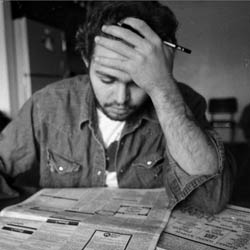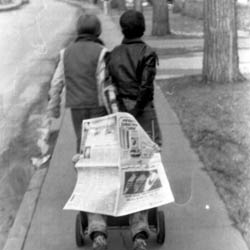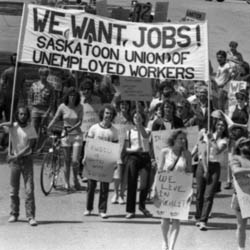The International Labour Organization defines unemployed workers as those who are currently not working but are willing and able to work for pay, available to work, and actively searching for employment. The prevalence of unemployment is usually measured using the unemployment rate, which may be defined as the percentage of those in the labour force who are unemployed.
Many economists believe that a certain level of unemployment is inevitable in capitalist economies, and that it plays an important role in preventing inflation. Labour unions are opposed to high unemployment rates since they may suppress wages and benefits. Many manufacturers and retailers believe that the reality or fear of unemployment will negatively affect the demand for their goods and services. Governments are usually alarmed by high levels of unemployment since they represent a loss in revenues, reflect negatively on their reputations as economic managers, and tend to stir public and political unrest.
On the personal level the loss of employment can be financially and emotionally stressful. The failure to meet financial obligations can lead to repossessions, loss of credit and personal bankruptcy. Some studies indicate that prolonged unemployment can be associated with poverty, family strife, an increase in illness, and emotional depressions associated with losses in self-esteem. The search for a new job and livelihood is often a very difficult and anxious task for older workers and those whose existing skills are no longer in demand.
During the Great Depression there was no unemployment insurance or much else in the way of the economic safety net that Canadians have now come to expect. In 1933 unemployment among Canadians reached the staggering rate of 30% of the total labour force, with Saskatchewan being even harder hit with a collapse of both the agriculture and construction industries. Charity was the only recourse offered to most single workers at the beginning of the depression; married men with children were eventually provided with some help in low wage "work for relief" projects.
The length and severity of the Depression, and the inadequacy of official responses, led to much social unrest in Saskatchewan, including demonstrations and protest meetings, strikes on relief projects and in work camps, and a series of violent confrontations between the police and the unemployed. The most famous of these is the riot that occurred on July 1, 1935 in Regina when police attacked members of the On-to-Ottawa Trek of unemployed workers and their supporters.
One of the chief goals of working class activists was achieved in 1940 when the Liberal government of Mackenzie King introduced the Unemployment Service Act, establishing a national unemployment insurance program. This program now provides temporary financial assistance to unemployed Canadians who are looking for work or upgrading their skills. Some assistance is also now provided to Canadians who need to leave work due to sickness, pregnancy, or the need to care for newborn or newly adopted children.
Presently Canadian and Saskatchewan governments address unemployment by providing vehicles for the advertisement of job opportunities across the country and by sponsoring job search training. Some workers can find funding for vocational retraining or the enhancement of qualifications. Corporations and non-governmental agencies are also sometimes provided support to introduce or reintroduce workers to employment on a temporary basis. One federal response to the economic recession of 2009-2010 was to expand employment in the construction and renovation industries through tax relief.



![Response to a Help Wanted Advertisement, ['1926']](cropthumbs/DOC-2006-33.jpg)



